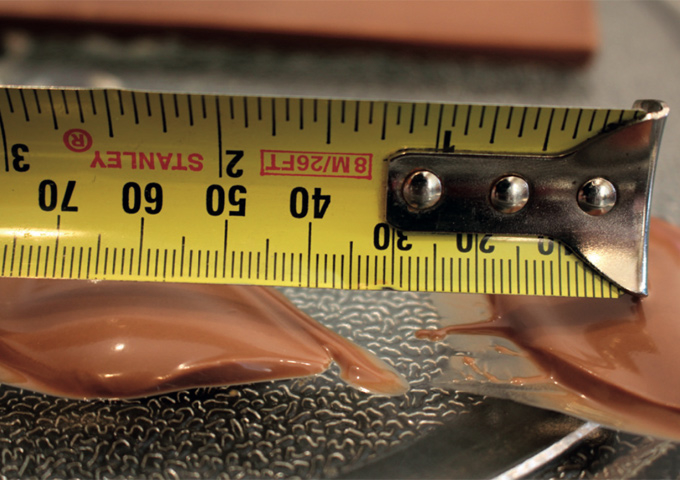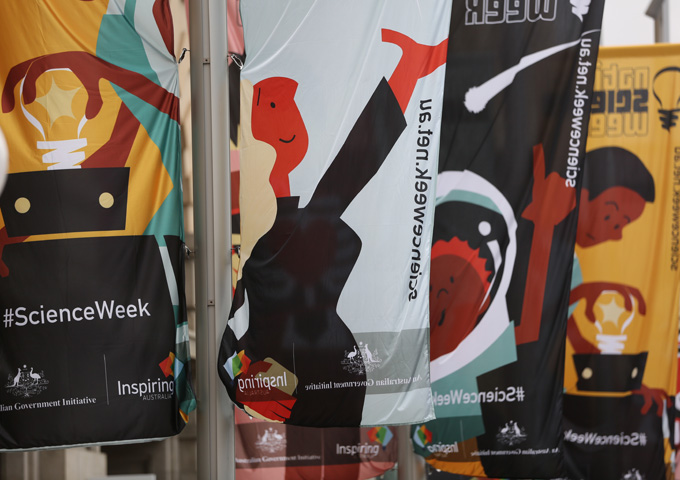
What you need:
- a microwave oven
- two blocks of chocolate (about 4 mm thick)
- a plate, three ramekins and a ruler
What to do:
- Look on the oven’s compliance plate (inside the door or on the back) and note the microwave frequency (it’s usually 2450 MHz).
- Remove the turntable from the microwave.
- Put three ramekins on the floor of the oven, so they can hold a dinner plate up away from the spindle.
- Place the chocolate blocks next to each other on the plate and put it in the oven. Ensure it won’t rotate.
- Run the microwave on low for 30 seconds or so until the chocolate starts to melt in separate spots.
- Lift up the unmelted chocolate and remove it, leaving behind pools of melted chocolate.
- Measure the distance between the centres of two of the pools (see photo).
- Replace the turntable and melt all of the chocolate in a bowl to enjoy with fresh fruit.
Safety note:
Use microwave oven safe crockery and don’t overheat the chocolate. Beware of hot spots in the food.
What’s happening?
Microwaves are a form of light. Knowing the wavelength and frequency allows us to calculate the speed of light fairly accurately, even in a kitchen.
When the food doesn’t rotate the microwaves warm the food unevenly, and the hot spots correspond to the crests and troughs of the lightwaves. These are half a wavelength apart. We double the distance to get the wavelength.
Calculate the speed of light:
speed of light = wavelength x frequency
= 2 x measured distance x frequency
= 2 x 0.060 m x 2450 000 000 Hz
= 294 000 000 m/s (the actual speed is 299 792 458 m/s)
What speed did you get?






